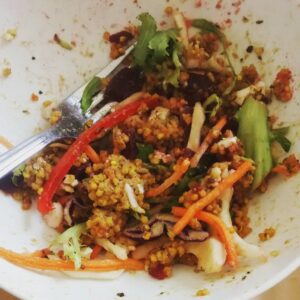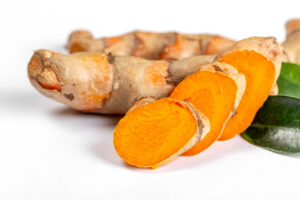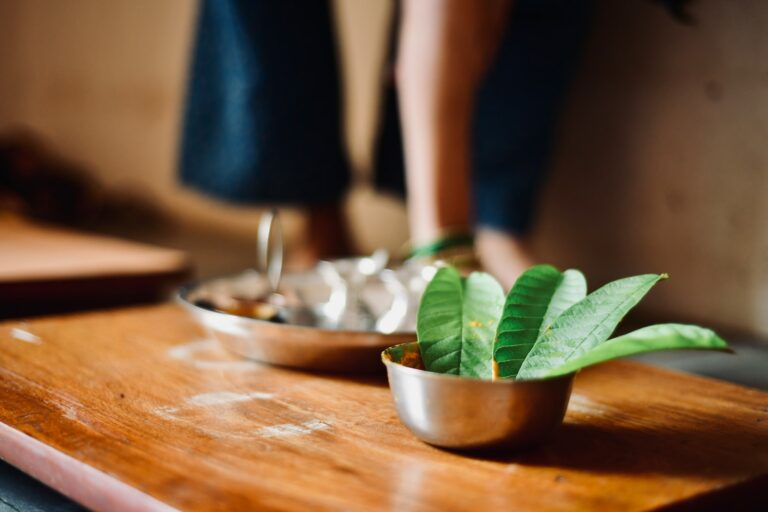Cooking with turmeric leaves adds a fresh and vibrant dimension to culinary creations. The use of this unique spice variation, derived from the ginger family, has been a tradition since ancient times. In this article, we delve into the rich culinary heritage of turmeric leaves, exploring their diverse applications in both Indian and Middle Eastern cuisines. From the health benefits to the aromatic flavor they impart, turmeric leaves are a versatile ingredient that deserves a place in every kitchen.
Unearthing the Treasure: Cooking with Turmeric Leaves
Turmeric leaves, scientifically known as Curcuma longa, are an essential component of many coastal regions’ culinary practices. These large, bright green leaves are commonly used to wrap and cook dishes, infusing them with a distinctive flavor. Beyond their culinary uses, turmeric leaves also hold significance in Ayurvedic medicine, recognized for their anti-inflammatory properties and powerful antioxidant content.

Harnessing the Freshness: Fresh Turmeric Leaves in Recipes
While turmeric root and dried turmeric leaves are readily available, there’s a certain vivacity that comes with using fresh turmeric leaves. They elevate the flavor profile of a dish, providing a unique twist to traditional recipes. The essence of the fresh leaf lies in its ability to infuse a dish with a refreshing, earthy aroma, different from the ground turmeric commonly found in spice racks.
The Multifaceted Health Benefits of Turmeric Leaves
Beyond their flavor-enhancing qualities, turmeric leaves are renowned for their health benefits. Rich in curcumin, a potent bioactive compound, they are a natural remedy for various health problems. From alleviating symptoms of arthritis to aiding digestion, turmeric leaves have long been an essential element in the pursuit of holistic well-being.
A Culinary Journey: Cooking with Turmeric Greens
Turmeric leaves are a staple in both Indian and Middle Eastern cuisines, often used to impart a spicy and aromatic flavor to dishes. They are believed to not only enhance the taste but also boost the nutritional value of a meal. The leaves are commonly soaked in water or coconut milk to soften them before being used as a wrapper for fish or other dishes. This cooking method not only imparts a unique flavor but also ensures that the dish is infused with the healthful properties of turmeric.
Beyond Flavor: Turmeric Leaves as an Essential Spice
Turmeric leaves are not just about adding a spicy kick to a dish. They are an essential component of many recipes, contributing to the overall character of the food. The leaves are believed to have antiseptic properties, making them an excellent addition to dishes that promote digestive health and alleviate issues like gas and bloating.

An Ancient Spice for Modern Palates
In modern times, as the search for natural and holistic approaches to health and beauty gains momentum, turmeric leaves are making a resurgence. Their use in cooking is not just a matter of tradition, but a conscious choice to embrace the benefits of this powerful spice. As we rediscover the wisdom of ancient culinary practices, turmeric leaves are taking their rightful place in kitchens around the world.
Final Thoughts: Elevating Flavor and Health with Turmeric Leaves
Cooking with turmeric leaves is a journey of flavors and health benefits. This unique spice variation, deeply rooted in ancient traditions, brings a fresh twist to classic recipes. From its role in imparting an aromatic flavor to its contributions to holistic well-being, turmeric leaves are an essential ingredient that deserves a prominent place in our culinary repertoire. So, whether you’re seeking to add a vibrant flavor to your dishes or harness the healthful properties of this powerful antioxidant, turmeric leaves are a versatile and invaluable addition to any kitchen.

